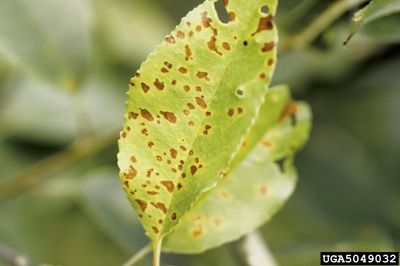About Cherry Leaf Spot in Plums
This disease is a fungal infection that attacks plum trees and both tart and sweet cherry varieties. The optimal conditions for the development of the infection include temperatures around 60 to 68 degrees Fahrenheit (15 to 20 degrees Celsius) and either high humidity or rain. With the right temperatures, just a few hours of moisture can be enough to trigger the spores to germinate and begin infecting a tree. The fungus is spread from one branch or one tree to another by wind and water. The spores overwinter in leaf litter and can cause infection in the spring.
Signs of Cherry Leaf Spot on Plums
Plum trees are less susceptible than cherries to this infection, but they are still vulnerable, so it is important to watch for signs. Plum leaf spot symptoms begin with small, reddish or purple spots on the upper surfaces of leaves. As the infection advances, the spots on the leaves turn and punch through, and this leads to a shot-hole, raggedy appearance. After rain you may see a fuzzy pink or white spore cluster on the bottom of leaves. Severe infections can cause premature defoliation and affects the fruit development, but this is more common in cherry trees than in plums.
Managing Plum with Cherry Leaf Spot
Even if you have signs cherry leaf spot on plums in your yard, it doesn’t have to be a disaster. You can manage and control the spread of the infection, minimizing the impact of the disease. Clean up leaf litter each fall and burn it to prevent existing spores from spreading. Use a fungicide—many different types will work—to protect healthy trees and to spray trees in spring that were affected the previous year. This can prevent the infection from taking root again. It is also important to protect and strengthen trees that have been impacted by cherry leaf spot. The infection can cause stress, so apply fertilizer a couple times a year and water regularly to be sure the trees can thrive in spite of a small degree of fungal infection.
